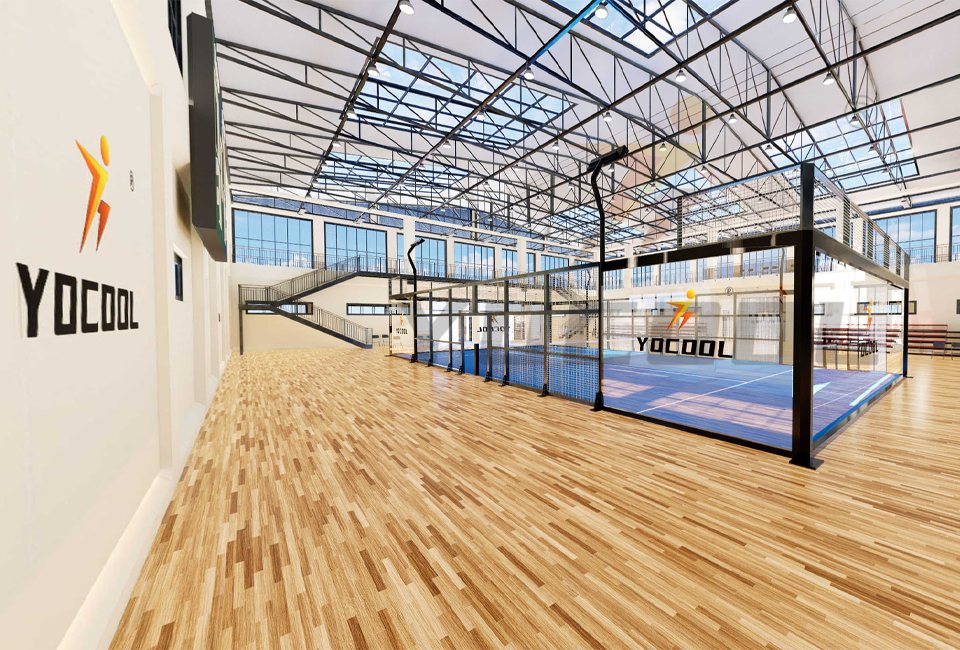

Exploring the Paddle Tennis and Pickleball Factory A New Frontier in Sport Equipment Manufacturing
In recent years, paddle tennis and pickleball have surged in popularity, quickly becoming staples in recreational sports across the globe. As players flock to courts and parks, the demand for high-quality equipment has intensified, leading to the rise of specialized manufacturing facilities dedicated to creating paddles and other gear tailored to these dynamic sports. This article dives into the fascinating world of a paddle tennis and pickleball factory, exploring the processes, innovations, and impacts of this emerging industry.
The Evolution of Paddle Sports
Paddle tennis and pickleball share a common lineage, tracing their roots back to traditional tennis. Paddle tennis, played with solid paddles and a perforated ball, is often enjoyed on smaller courts. Pickleball, a unique mix of tennis and badminton, combines elements from both sports and is known for its engaging gameplay, characterized by the use of lightweight paddles and a plastic ball with holes.
As the popularity of these sports grows—pickleball, for instance, is one of the fastest-growing sports in the United States—manufacturers have stepped up to meet the needs of players at all levels, from beginners to professionals. The innovation happening within paddle tennis and pickleball factories exemplifies the intersection of athletics and technology.
Manufacturing Process
The process of creating paddles begins with material selection. Most modern paddles are made from a combination of lightweight materials such as carbon fiber, fiberglass, and polypropylene. Manufacturers focus on creating paddles that not only enhance playability but also offer durability and responsiveness.
1. Material Selection The first step in the manufacturing process is selecting the right materials. Manufacturers choose lightweight, high-strength materials to ensure that players can swing easily while maintaining control over the ball.
2. Core and Surface Construction The next phase involves crafting the core of the paddle, which significantly influences its performance. Common core materials include honeycomb polypropylene, providing an excellent balance of strength and weight. The surface layer is then constructed using various composites, optimizing for power and control.

3. Design and Customization After the base structure is created, manufacturers focus on aesthetics and personalized options. With advances in technology, paddle manufacturers can create custom designs that resonate with personal style while also providing feedback to professional players on how certain designs impact play.
4. Testing and Quality Control Each paddle goes through rigorous testing to ensure quality and performance. From bounce tests to durability assessments, manufacturers leave no stone unturned, as the right paddle can make all the difference in a game's outcome.
5. Packaging and Distribution Once testing is complete, paddles are packaged and prepared for distribution. Factories often collaborate with sporting goods retailers and online platforms to reach a global audience, ensuring that players have access to the latest innovations.
Sustainability Considerations
As with many contemporary manufacturing processes, sustainability has become a crucial focus for paddle tennis and pickleball factories. Manufacturers are increasingly adopting eco-friendly materials sourced from renewable resources whenever possible. Moreover, many factories are working towards reducing their carbon footprint through optimized production techniques that minimize waste.
The Future of Paddle Sports
The paddle tennis and pickleball factory embodies more than just a production line; it represents a thriving community of athletes seeking to elevate their game through high-quality equipment. With technological advancements and a steadfast commitment to innovation, these factories play an essential role in shaping the sports' future.
As paddle sports continue to evolve, players can expect to see even more exciting developments from manufacturers. Whether through improvements in paddle design or the introduction of smart technology integrated into equipment, the future looks bright for paddle tennis and pickleball enthusiasts.
In conclusion, the paddle tennis and pickleball factory stands as a testament to the vibrant evolution of sport equipment manufacturing. It not only meets the demands of an expanding market but also pushes the boundaries of performance, sustainability, and player experience. As more individuals take to the courts, we can anticipate a flourishing relationship between athletes and the innovative gear designed to enhance their games.
High-Performance Industrial Flooring Solutions China Paddle Tennis Court for Sale
High-Performance Industrial Flooring Solutions Durable & Cost-Effective
Homogeneous Transparent Floor – Durable & Stylish Rubber Floor Solutions
Premium Homogeneous Transparent Floor for Durable & Stylish Spaces Rubber Floor Solutions
Premium Sports Floor Solutions Durable PVC Sports Floor & Rubber Floor for Gyms
Durable Rubber Composite Floor Premium Rubber Floor & Mats Solutions